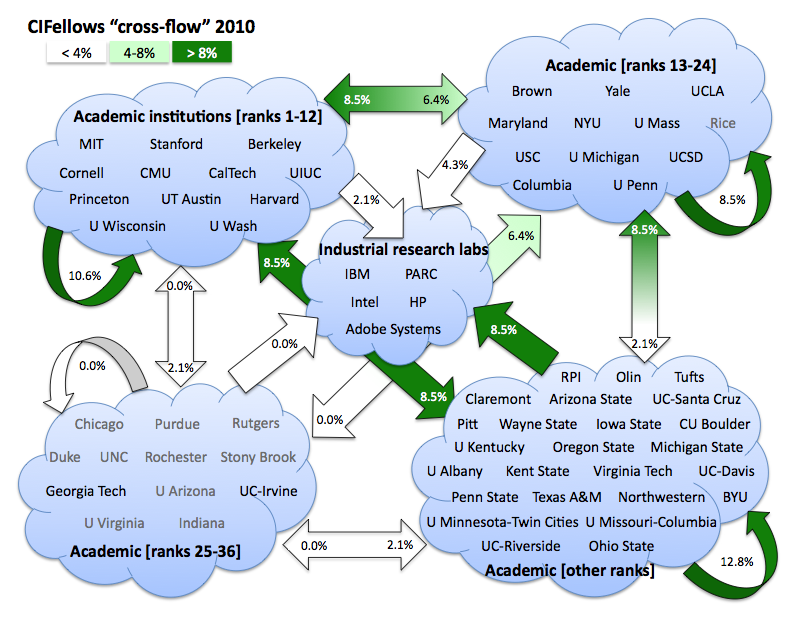Cross Flow Among the 2010 Computing Innovation Fellows
For a second straight year, this summer the Computing Research Association, with funding from the National Science Foundation, extended offers of one- to two-year postdoctoral fellowships to new Ph.D.s, in an attempt to retain recent graduates in computing research and teaching during difficult economic times (see 1,2 for details). A key requirement of the CIFellows Project has been to support intellectual diversity in computing fields at U.S. organizations. To this end, the 2010 cohort of CIFellows is comprised of 47 individuals from 34 different Ph.D.-granting universities within the United States, and collectively the CIFellows are being assigned to 36 unique host organizations spanning U.S. academic departments and industrial research laboratories. As with CRA’s 2009 CIFellows, the new awards provide the kind of cross flow across types of organizations that we had sought to promote through the project.
Specifically, as reported in November 2009 (see3), we measure cross flow by classifying institutions sending (i.e., graduating) and receiving (i.e., hosting) CIFellows according to the groupings of CRA’s annual Taulbee Survey, which are derived from the National Research Council’s (NRC’s) 1994 rankings of computer science doctoral programs4: departments ranked 1-12, 13-24, 25-36, and higher than 36 or unranked (“other ranks”). This grouping approach is admittedly imperfect; the ratings are somewhat outdated and apply only to a given institution’s computer science program, even though CIFellows or mentors may be from computer engineering, information systems, or other allied programs. However, it serves the purpose of an approximate measure of institutional peers, and has the advantage of being familiar to CRA members.









